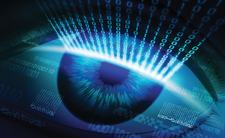Testing scanners under Linux
Scan It

© Lead Image © wbraga, 123RF.com
Using scanners to digitize documents in Linux was once a perilous business, but Linux scanner technology has improved in recent years. We study the state of the art with some leading scanners from various manufacturers.
If the paperless office were already a reality, no one would need a scanner anymore. But wherever you look in the corporate environment today, you very quickly see that traditionalists continue to defend the ubiquitous role of scanners in the office. And not only that, increasing numbers of multifunction printers with integrated scanning units are being used in home offices and by private users.
Electronics stores continue to sell dedicated flatbed scanners, as well as equipment for special applications. This includes devices for mobile use, but also document scanners that automatically digitize large volumes of documents (see the "Big Devices" box). This article investigates how this device farm gets along with Linux.
Standards
When scanners gradually became affordable for smaller companies in the early 1990s, a consortium of various hardware and software manufacturers developed the TWAIN specification. It defines a uniform interface for controlling scanners from within applications. While the TWAIN interface was initially only developed for Microsoft and Apple operating systems, version 2.0 also has supported Linux [1] from 2008.
[...]
Buy this article as PDF
(incl. VAT)
